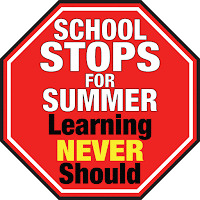Superintendent News & Views
Act NOW to SAVE Iowa’s schools & taxpayers
By David Hill, North Tama Superintendent
To many people, the year 2029 seems like a date in the distant future. To school boards, superintendents, and others responsible for long-term planning in local school districts like North Tama, 2029 is approaching quickly.
Why focus on the year 2029? That’s when the current law giving schools a share of the state's sales tax revenues is set to expire. The "Secure an Advanced Vision for Education" Fund (often referred to as SAVE or the “statewide penny”) is funded by a statewide one-cent sales tax. This revenue is distributed to schools as a categorical funding stream that can be used for infrastructure needs, technology upgrades, and for the purchase of large equipment such as school buses.
Even though the SAVE expiration is between 10 and 11 years away, this is a major concern NOW for many schools. In previous years, districts facing major infrastructure needs (examples: a roof replacement, a new school building, or a major addition to a building) have been able to borrow against future SAVE revenues to meet these needs. Borrowing against future SAVE revenues is no longer an option for most schools because of the pending expiration. Extending SAVE now would bring this option back for schools immediately.
Without the SAVE extension, the cost of facility maintenance and improvements will shift to local property taxes. You may have noticed an increase in the number of school bond referendum votes in recent years; these bonds are financed by higher property taxes. During the 2017 fiscal year alone, thirty-three Iowa school districts held such an election. The impending 2029 SAVE expiration is the primary reason we’ve seen so many of these votes.
There has been a statewide effort to extend SAVE beyond 2029. During the most recent legislative session, the Iowa House of Representatives overwhelmingly approved the extension of SAVE by a margin of 95-3; however, the Iowa Senate did not take up the measure. I’m confident the SAVE extension will be proposed again in the next legislative session, as there is bipartisan support for SAVE as a key component of maintaining low property taxes while meeting the educational needs of Iowa’s future workforce.
For North Tama, the "statewide penny" has become a vital source of funds that have been used to maintain and improve our aging facilities; furthermore, SAVE funds have allowed the district to provide a safe, modern transportation system and to become a leading district in technology. We’ve been able to accomplish this while maintaining one of the lowest property tax rates in the state and the region. 88% of Iowa’s school districts had a higher property tax rate than North Tama in the current fiscal year, and North Tama’s property tax rate is the lowest of the 48 districts that have a presence in the 9-county region that includes and surrounds Tama County.
With portions of North Tama’s buildings being over 100 years old, it is reasonable to expect that additional improvements and maintenance expenses will be warranted well beyond 2029. In the coming years, North Tama Schools will have needs such as roof and boiler replacements, major repairs to the heating and HVAC systems, concrete replacement, improved handicapped accessibility, new school buses, and technology upgrades. The SAVE extension will likely be critical in meeting these needs in the years ahead.
With legislative elections approaching next month, I hope our readers will consider asking the candidates where they stand on the extension of the SAVE statewide penny. Once the dust has settled following the November election, I encourage North Tama patrons to contact your legislators to encourage the extension of SAVE during the 2019 legislative session.
I encourage your feedback on this column, along with any questions you may have. These SUPERINTENDENT NEWS & VIEWS columns, in addition to my blog and Twitter postings, are part of my plan for open communication with the community as a part-time superintendent with duties in another area school district. If you’ve missed any of my columns or would like to re-read or share them with your friends and family, you are welcome to visit my blog at http://redhawksupt.blogspot.com/ where they are all posted. You are also welcome to follow me on Twitter (@DavidRobertHill) where I will occasionally post updates or other information not found on the blog.








